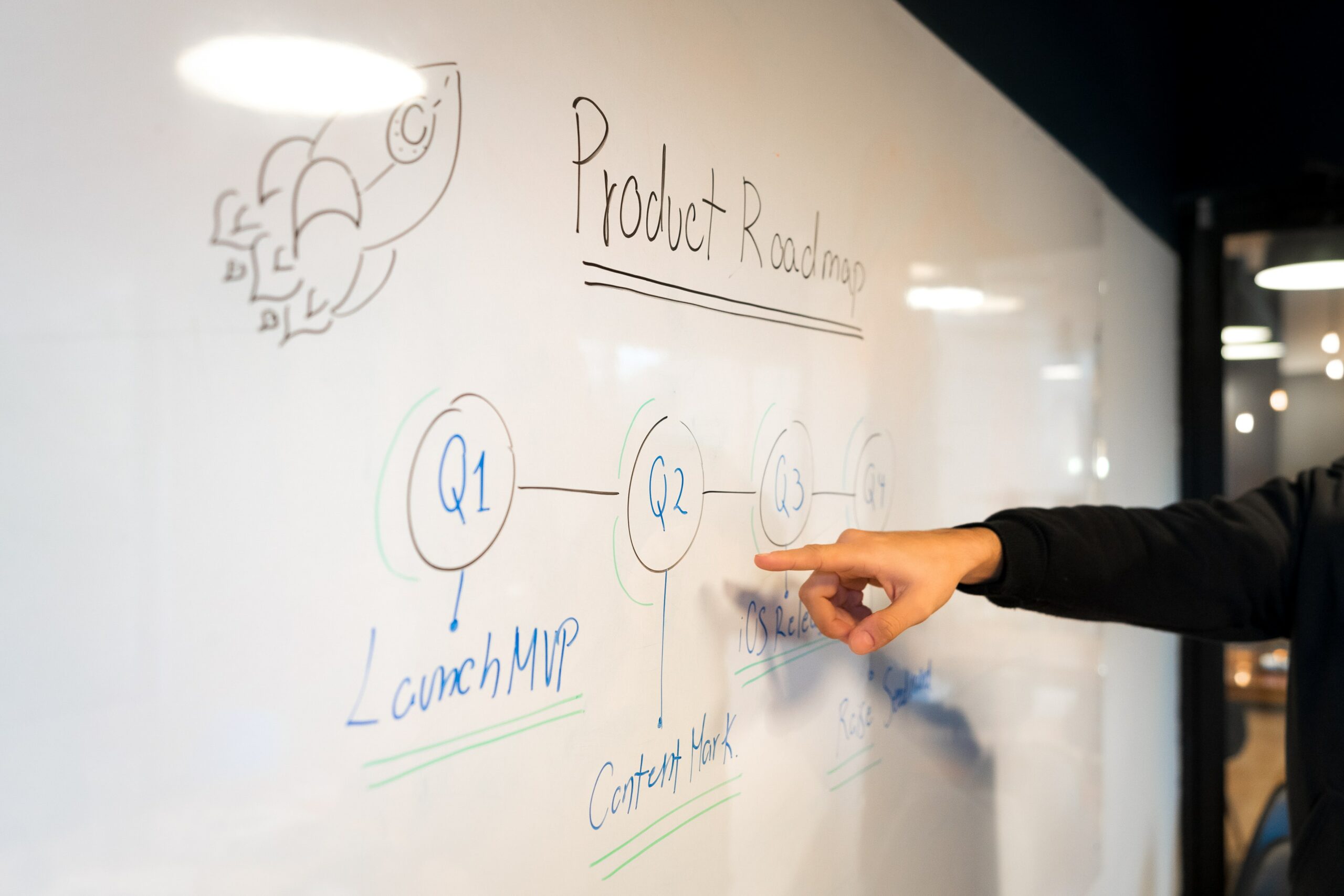Why Spend the Time and Money to Build an MVP?
Your MVP software is what allows businesses to enter digital marketplaces and begin their journey to success.
Building an MVP allows businesses to begin the iterative process of development, polishing each aspect while ensuring overall alignment stays in place, as adding new pieces always changes the balance of your system.

If your goal is to build a spaceship and it ends up as a firetruck somewhere along the line, you’ll need to go back to phase one and cut your losses. | Source: Azur Digital
We’re going to start by covering a few aspects of a great MVP and then discuss why this first iteration of a digital product is so important.
Table of contents
- What should MVP software development look like?
- What happens when you overdevelop the first release?
- How to get started building an MVP
- 4 Key benefits of putting time and money into your MVP
What should MVP software development look like?
When building a digital product, understanding that focusing on a solution to a single or small group of closely related problems is the goal.

It needs to have a little everything before it has everything 😊 | Source: Interaction Design Foundation
Your MVP needs to provide a useful service that either brings innovation to the market or spins an existing formula for the better – most importantly, it has to be engaging.
The mantra for an MVP is “cut, cut, cut” to the point where it simply captures the essence of your main idea. It should have minimal features to engage early adopters such that you can test your hypothesis.
What happens when you overdevelop the first release?
There are a couple of reasons you don’t want to build every feature you’ve conjured into a first release.

Like these rocks, you can’t just force a bunch of features together at the same time and expect the system to grow as expected. | Source: Shiva Smyth on Pexels
Every audience and product combination is unique – by adding too many complexities, you run the risk of not being able to adjust. Much like stacking rocks or building a home, you start with the foundation and logically tackled each next step.
Another reason is that this requires smaller series of investments. This also helps prevent small oversights that can crush a product that tries to do much at once as we have seen with the multi-billion dollar Quibi platform that imploded or more recently, CNN+.
Longer time-to-market will often negatively impact your product’s success – in the most dramatic cases, someone else with the same idea could steal your thunder, among other complications that can arise.
How to get started building an MVP
Running through a Design sprint is the ideal way to go begin MVP software development. You’ll work with a team of designers and developers to hone in on pressing matters that your product will solve while creating a roadmap for future feature releases.

Your UX will evolve as your product evolves but the starting point is arguably the most important. | Source: Alvaro Reyes on Unsplash
Incorporating what you’ve learned into the UX designs is what will allow you to test your hypotheses with real users to understand how your product will be received by your early adopters.
The prototype you’ll have by the end of the process will closely resemble the MVP as it will incorporate the feature set for the digital product’s first iteration.
Here, you’ll collect your first batch of feedback from a group of test users that will serve to solidify your initial designs and features.
The Design Sprint will also allow you to get to the market quickly above all else. To quote Reid Hoffman, the founder of LinkedIn:

It’s not to say that you should release junk, but you should be able to look at your product and imagine all the possibilities once you see it running in the real world.
Benefits of putting time and money into your MVP
Though your MVP will be a refined version of what your product will look like down the road, it still needs to get the job done.
Putting together a great MVP will enable you to do the following.
Win stakeholder and investor buy-in
MVP software development showcases actual results to those putting up the money for development.

Showing investors an engaged user base gives them confidence and demonstrates you have what it takes to grow their investment. | Source: TheDigitalWay on Pixabay
Because most digital products don’t typically yield enough profit for further development during their MVP phase, you’ll need additional funding to promptly build the next wave of features.
An MVP serves as a proving ground where you can demonstrate through feedback, both good and bad, that a product’s growth aligns with its projected earning trajectory.
Learn about the usability of the product
The UX of a digital product is often built on layers of assumptions that, when combined, work to define the UI which is why constant feedback is so valuable.

A good UX should produce some smiles which you should look for during your test phases. | Source: Ketut Subiyanto on Pexels
The prototype from the design sprint will give a glimpse of insight into the product’s usability – once it’s live on the market, you’ll learn much more from real use case scenarios.
Information from app store reviews as well as data gathered from backend analytics will both expose shortcomings and reveal opportunities.
By applying this information to optimize the UX, your product will be better equipped to retain its user base.
Test your product and prove you’re able to quickly address issues
The goal is to furnish an app with as few bugs as possible but that’s never the case in real-world MVP software development.
You’ll find that users will somehow manage to get an app to do “the impossible,” for better or worse. A system needs to be in place to address and prioritize software patching by using tools like Jira that we use here at Blue Label Labs.
The timely repair of issues shows users that you pay attention and care about the problems they experience.
Verify market demands before going all in
Through testing, analyzing feedback, and measuring financial results, you’ll gain insight into your product’s market viability.

The whole goal is to make the above process as effective as possible which you should regularly work to improve by seeking feedback from your user base. | Source: UserGuiding
Your performance (or lack thereof) will reveal if your digital product has the wherewithal to continually produce results throughout its lifecycle.
It’s a good idea to request specific feedback through a survey of your existing users to understand how pricing might affect their experience. Finding the sweet spot for pricing allows you to retain your early adopters as well as appeal to new users.
Observe user behavior to solidify or adjust the next milestones on your roadmap
Future releases organized on your roadmap are a result of early assumptions and initial user testing.

Your roadmap should be somewhat flexible as many find themselves faced with the occasional detour during the during. | Source: Slidebean on Unsplash
You may well find that your next planned feature won’t be nearly as valuable to users as something scheduled for later in the development cycle.
An analytics stack needs to be set up alongside well-defined funnels to understand how people are finding your product and interacting with each element once they’ve become users.
Information you gather from feedback and analytics should be used to either justify your roadmap or tweak feature releases to align with user expectations.
We understand that a successful product starts with a true MVP
Year of experience has taught us – and continues to teach us! – how to effectively create engaging digital products and get them to the market quickly.
Get in touch with us to learn more about our MVP software development process and how we can help your product to engage with users throughout its life cycle.









